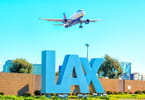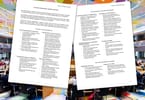New travel industry survey revealed the impact of Covid-19, uncovering the public’s thoughts and opinions on leadership, travel destinations, money and what the future may hold.
As the world continues its battle against COVID-19, governments, companies and individuals from around the globe are all facing extreme challenges as restrictions on travel are enforced and industries halted.
The immediate impact of the pandemic on tourism has been felt in nearly every country, but which country has the most amount of travel restrictions in place and what will the long term damage on tourism be across the globe?
The countries with the most travel restrictions due to COVID-19
New measures are being introduced daily to countries across the world to reduce the spread of the virus. Some of these restrictions include quarantining incoming passengers, canceling commercial flights and closing borders to non-residents, with some implementing stricter regulations than others. But, which countries have the most measures in place?
*at the time the data was collected?
| رٿا | ملڪ | پابندي |
| 1 | سري لنڪا | 37 |
| 2 | ملائيشيا | 26 |
| 3 | سعودي عرب | 26 |
| 4 | عراق | 19 |
| 5 | فلپائن | 18 |
While these countries are at the top of the list, the survey has revealed that many of us have our own opinions on the travel restrictions currently enforced in the US, more specifically on whether we agree or disagree with them.
More than 1 in 10 (11%) believe it is safe to travel despite the COVID-19 outbreak, this percentage increases to nearly 14% in the 25-34 age group, in comparison to just a mere 4% in over 55s. While some people believe it’s still safe to travel, 14% of Americans think that it will never be safe to travel abroad ever again, with nearly a third (32%) believing the decisions made by Donald Trump have worsened the impact of COVID-19.
With COVID-19 limiting everyday life for Americans, and travel bans very much still in place with Trump announcing he has no plans to lift these anytime soon, 2 in 5 Americans (41%) and nearly half (49%) of healthcare workers believe that Trump is not doing enough to tackle the virus outbreak.
What do travel and tourism look like after COVID-19?
The tourism industry has been impacted globally with all travel coming to a halt, but has this changed the public’s idea of holidaying in the future?
With nearly 2 in 5 (38%) Americans saying they will still be too worried to travel once restrictions are lifted, some people vowing to not travel to certain countries, stating “they would never holiday there due to COVID-19”, so which countries fall within this category?
| رٿا | The country Americans will not travel to | Percentage of Americans |
| 1 | چين | 15٪ |
| 2 | ايران | 11٪ |
| 3 | اٽلي | 11٪ |
| 4 | اسپين | 10٪ |
| 5 | فرانس | 9% |
With more than 1 in 10 Americans (15%) saying they will never travel to China again, this could have big economical impacts on the Chinese tourism industry. The states that are most scared to visit Asian countries in the future, post-COVID-19, are Washington D.C. (51%), Philadelphia (46%) and San Jose (44%).
Despite us not knowing how long these restrictions could last and when a COVID-19 vaccine will be found, the average American, should they wish to holiday to countries affected with the virus, will wait over two years (745 days) before traveling to China. The average person is even planning on waiting up to nearly three-quarters of a year (263 days) before going on a staycation within the US.
So how long are people going to wait to visit other countries affected by COVID-19?
| Country to holiday in | Average days before traveling again |
| چين | 745 |
| اٽلي | 695 |
| اسپين | 639 |
| ايران | 639 |
| برطانيه | 623 |
The virus, so far, has cost the average American nearly $6,000
From canceled travel plans, weddings and other events to additional costs for household work, food and late payment fees, COVID-19 has put a strain on the public and their earnings. Since the start of the pandemic, it has cost the average person $5642.49, with the biggest cost coming from a loss of earnings at $1,243.77.
Despite travel insurance companies paying out for holidays that have been canceled or postponed, it has still cost the average American over $600 ($628.19) to cancel holidays abroad or at home, which is another added cost and strain.
Most schools have also closed due to Coronavirus and are not going back for the rest of the academic year. This is having a big financial impact on parents and guardians with an increased cost of over $500 ($534.03) since the virus outbreak.
How the impact of the COVID-19 media coverage shows a divide in generations
From the early days of the media covering the virus to the now daily coverage of the COVID-19 briefings, there shows a clear generational divide when it comes to how the media is portraying the pandemic. More than a third (37%) of millennials believe the media is exaggerating, with a specific jump in those aged 16-24 as almost 4 out of 10 agree with this statement.
When looking toward the older generations and over 55s, nearly a quarter (23%) agreed with the statement: “I think the COVID-19 outbreak has been exaggerated in the media” suggesting a lack of trust in news outlets.
What do people think about Trump and how he’s dealt with COVID-19?
Leaders around the world are having to make difficult decisions regarding the safety of their country and tackling COVID-19, so how do American’s feel Trump has handled the pandemic?
Almost two-thirds (66%) believe the US President isn’t doing enough to tackle the virus, with over 1 in 10 (12%) pro-Trump supporters still believing he isn’t doing enough. Over half (55%) believe he has worsened the situation and the impact the virus is having on them.
Despite these staggering statistics, nearly three-quarters of Americans (70%) believe that the decisions Trump has made have helped limit the impact of COVID-19. When breaking the data down nearly a quarter (24%) preferred not to give their opinion on Trump.
#بحالي سفر
هن آرٽيڪل مان ڇا وٺو:
- More than 1 in 10 (11%) believe it is safe to travel despite the COVID-19 outbreak, this percentage increases to nearly 14% in the 25-34 age group, in comparison to just a mere 4% in over 55s.
- The immediate impact of the pandemic on tourism has been felt in nearly every country, but which country has the most amount of travel restrictions in place and what will the long term damage on tourism be across the globe.
- While these countries are at the top of the list, the survey has revealed that many of us have our own opinions on the travel restrictions currently enforced in the US, more specifically on whether we agree or disagree with them.























